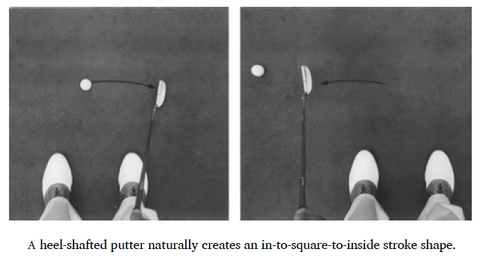How to Choose Golf Clubs-Golf Swing Step Through Drill
They say that a great worker never blames his tools, but that's not the golf case. Here are some things to keep in mind when you are choosing your golf clubs.
Shaft Length
A short club will cause you to bend over too much and get too close to the ball. A club that is too long will force you to stand too high and too far from the ball. Either way, your swing plane will be compromised.
Lies
A too upright club means your hands will be too high when you hit the ball. If the club sits too low, it will cause your hands to be too low at address. Again, your swing must compensate for both conditions.
Grip Circumference
If the grip is too thick or too thin, it will affect the ability of your hands to work correctly during the swing. And this is important. Your hands are the only point of contact you have with the club, where you make contact with the ball.
Shaft Flex
For your swing, a stiff club will cost you the distance. A "wobbly" club shaft will make you less accurate than you could be.
Length and Lies
Clubs have always been made for people of average height, but this has changed over the years. For example, the center of a basketball team used to be 6½ feet tall. Today, that's the height of a guard. So everyone is getting taller and, in turn, the clubs are getting Longer. When I was growing up in the mid-1960s, a normal 2-iron was 38½ inches long. Now it's 39¼.
So, if you are not of average height, chances are your club will not fit you. The most crucial aspect of any club is the length of the shaft and the ball position. They work in tandem with each other. The lie angle is how far the club's end is from the ground. If you add an inch to the length of the club, you don't get a full inch because the shaft rises at an angle.
If you want your clubs to be longer, you must make them more upright. Always do it in increments. A little at a time. For every degree the club is upright, you make it about an inch longer.
That's why, if your height, posture, and arm length make me think you need longer clubs, I'm not just suggesting you lengthen them. You also need to make them more upright. Staying away from the ball doesn't necessarily help your swing. Every golfer needs a good posture (more on this later) with hands hanging below the shoulders and bent forward from the hips at about 20 degrees. Nice and comfortable.
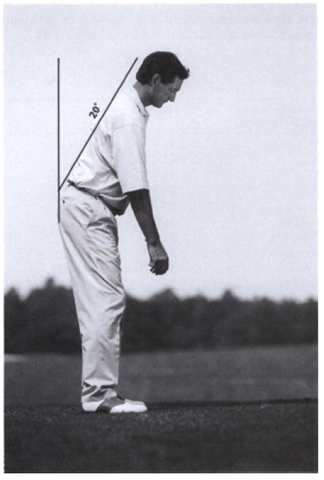
Related articles: How to grip a golf club
How long?
Your back, the length of your arms, and your legs are all factors that affect the club's length.
The most important point is the distance between your knuckles and the floor. The distance from your fingertips to the floor is not good because your hands may be abnormally large. Small or large hands and/or short or long fingers can skew the measurement. In addition, both situations indicate that you need a different grip size rather than a shorter or longer club.

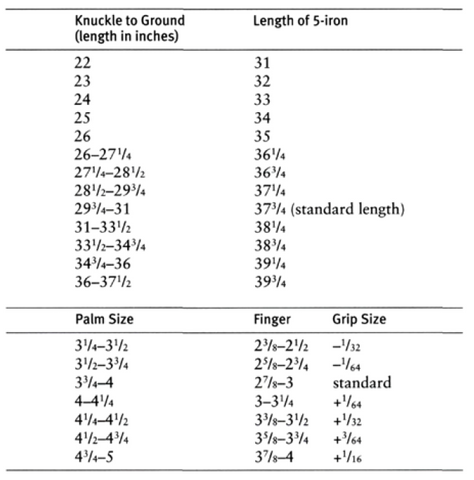
Cavity Back or Blade?
The cavity-backed club distributes its weight between the club's heel, toe, and top and bottom. There is no reason not to play for this club. Some say they like the blade because it gives them more feedback when they miss. That makes no sense to me. The ball will provide you with enough feedback. You want better misses, not telling you when to miss.
Today's clubs are just better designed. They give you a lot of help. You can hit the ball all over the club's face and get away with it. You can still get your ball to fly and get a good distance. As for blades - even tour pros don't use them now. Or at least a very low percentage of them use them.
If you're not using hollow clubs, you're not using the equipment that will help you the most.
Forged clubs and blades are easier to hit in certain situations - in the wind they can bring the ball down because there's not as much weight on the bottom of the club. And you can bend the ball more easily. But these are for the better player.
Shaft Flex
If another club is hitting the ball further than yours, check the club's loft, length, and flex. The distance you hit the ball and the speed of your swing determine which shaft length is best for you. For most amateurs, the club shaft has a regular forward value. The average golfer I see on the range swings at about 85 mph. It's a far cry from the pros. the minimum swing speed on the PGA Tour is about 110 mph. Tiger Woods and John Daly swing at about 140 mph. This is a huge difference.
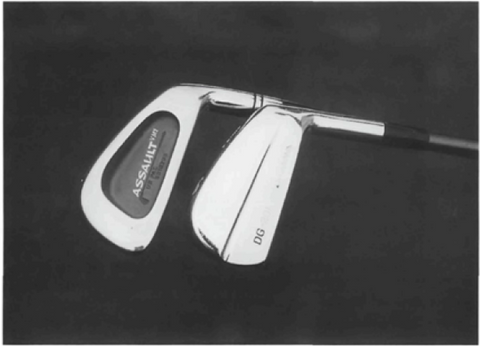
Two factors determine the best club bend for you: club head speed and tempo. Someone with a slow, smooth swing—Fred Couples, John Daly—and great speed through impact doesn’t need as sti a shaft as someone with a fast action—Nick Price, Lanny Wadkins. Nick and Lanny have very sti shafts in their clubs. Because they change direction from backswing to downswing so quickly, their shafts tend to “lag.” So they need sti ness.
Find yourself in the following categories:
Slow and easy swing—regular shaft
Slow clubhead speed, quick tempo—regular-sti shaft
Fast clubhead speed—sti shaft
Fast clubhead speed, quick tempo—extra-sti shaft
Usually, you can guess the speed of your club head from your distance. And you already know whether your tempo is fast or slow. The slower your rhythm, the weaker the clubhead. A quicker tempo requires a stronger shaft.
The shaft will also affect the arc and the height of the ball. A soft shaft is best if you want to get more distance. A Stiffer shaft tends to help your accuracy. So, if you are accurate but short, get a softer shaft.
Grip Sizes
Nowadays, there are many different types of grip for you to choose from. Some are better in cold weather and some are better in hot weather.
I find that rope grips perform better in hot weather but are hard on your hands. The softer grips give you a tighter grip in cold weather, but they tend to be difficult to grip in sweaty summer conditions. There are no rules for this. Use what you find most comfortable/useful.
The grip size is also important as it determines how your hands work in your swing. The thicker the grip, the more you will tend to use your hands. This can lead to cuts when hitting the ball.
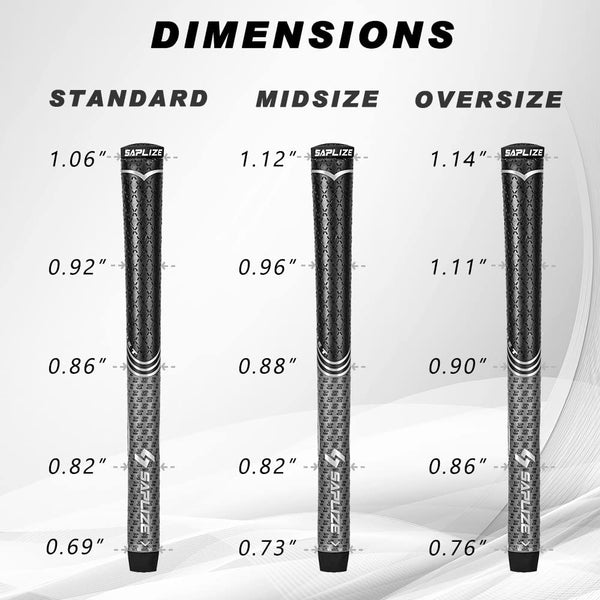
And vice versa. A thinner grip encourages hand movement at impact and can lead to more hooks. Once again, look at your batting action for clues. If you have big hands but you hit the slider, you may need a more oversized grip, but not too big. A large grip will make it difficult to settle your slider.
Or, if you have small hands, you may need a smaller grip. However, if you have hooked the ball, be careful. If the grip is thin, your hooked ball will be tough to get rid of.
Driver Loft
This is a very important point. Chippers are the single largest group of golfers. Chippers tend to hit the ball high. There are two reasons for this. Firstly, the club face is open at impact. Secondly, the club head enters the ball at too steep an angle.
Most chippers then buy a straighter club and try to hit the ball lower, which is a mistake. A straighter clubface will only lead to more and bigger chips. Higher loft means more backspin, and backspin cancels out sidespin. So, if you think that less loft means more distance, think again. A seven-degree driver will give you more slice or hook, not more yardage.
The problem is that it is hard to find the correct loft angle. There is no one answer for you, me, or anyone else. That's because every club manufacturer is different. The way the weight of the club is distributed may mean that you need one 10 degrees and another 8 degrees. But a ten-degree club will always allow you to hit it straighter. Ideally, it would help if you got clubs with a maximum loft that still produce the best trajectory.
The Third Wedge
Beware of the club maker's favorite trick. To make you think you are hitting the ball longer, they will lower the club's loft (The loft of a golf club is the angle of the club's face to the ground).
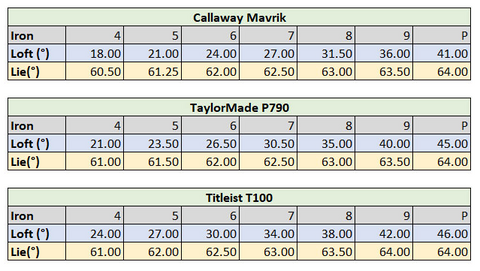
For example, a 6-iron today is 4 degrees stronger than 30 years ago. That's a lot of difference in a club and why there's a big difference between your pitching wedge and your bunker shot. Pitching wedges need at least fifty-two degrees of loft to work as they were originally designed. Some now have forty-seven degrees. This is a huge difference compared to the regular four-degree increments. This is why every manufacturer is now selling 'gap' wedges.
The evolution of gap wedges was inevitable. As soon as one cue maker bends their clubs, even more everyone follows suit. Once a club is strengthened, they all have to improve it. After all, it is better to have a notch at the club's end than a notch somewhere in the middle. Pitching wedges are the most accessible clubs to hit incomplete shots with. And, even if you can't develop this shot, you can still get a gap wedge.
Shortly after the third wedge was accepted, the high throw wedge came with a loft of up to 62 degrees. It became popular because people had trouble getting the ball into the air and stopping it quickly. Suddenly it was much more manageable.
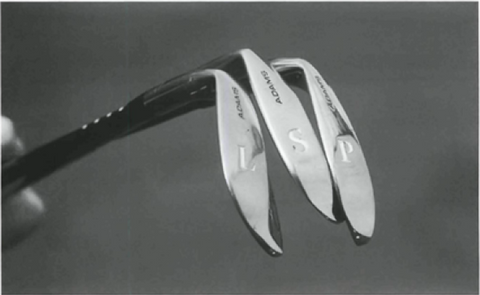
Fairway Woods
Most golfers should carry five fairway kinds of wood in their bags. If you're like most golfers, you should have at least four, maybe five fairway woods in your bag. Forget your long irons. They are too difficult to hit consistently well.

Fairway woods are easier to hit because the bottoms of the clubs are designed with some forgiveness in mind. They are a bit like bunker wedges. If you have a good lie, you can hit the bunker wedge behind the ball and still hit a half-decent shot. The club "slides" into the ball and leaves some room for error.
If you cannot hit a 275-yard tee shot, you should not use a 1 iron. If you can't hit a 260-yard drive, you shouldn't have a 2 iron in your bag. If you can't hit a 245-yard drive, you shouldn't use a 3 iron. If you can't hit a 230-yard drive, you shouldn't have a 4-iron in your bag. It's a pretty good rule of thumb. Eliminate irons as you go.
Putter
Personal preference plays a significant role here. The length of your putt and the position of your putt is determined by the way you set up on the ball. The more you bend over, the more you tend to putt short and not as well on long putts. Standing up and working further away from you gives you a better view of the long putt and a better feel for distance.
But these are all generalities. Nowhere in golf is it easier to make a mistake than with a putt. A lot of the time, you should do what you feel comfortable with.
What I would say is that your style should match your putting stroke. There are many different types of putters. Heel-and-toe-weighted putters. Heel-shafted putters. Center-shafted putters.
If you are like Ben Crenshaw and like to feel the swing of your putter from on to off, then you are better off using a heel-shafted.
If you are like Tom Watson and try to keep the clubface square, then get a center-shafted putter .
Please note that all putters have about three and seven degrees loft. The more loft you have, the more the ball rolls on the grass. On really fluffy greens, you'll want to use a club with more loft; on fast greens, less loft.
But again, it depends on your style. If you like to keep your hand in front of the ball when you hit it, you may want a putter with more loft. If your hands are more level with the ball, you'll wish for a putter with less loft.
